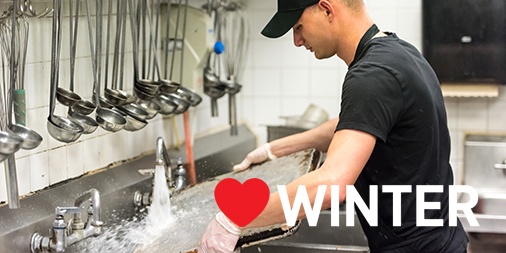A high-performance kitchen means many things, but for the building’s Plumbing Engineer, one of the most important aspects to ensure optimal operations is to plan for an effective grease waste system. Grease interceptors in commercial kitchens are becoming increasingly popular as a means of preventing fat, oil and grease (FOG) from discharging into the sewer system.
As building design trends are pushing grease interceptors further away from the kitchen and capturing more points of use as part of a larger system, it is vital to maintain the temperature of grease waste system piping from the initial flow point to the interceptor to prevent blockage and maintain flow. Since FOG separates best when the effluent is hot, thermal insulation of the pipes alone is not sufficient to keep grease waste free flowing. With unheated pipes, the risk of clogged grease lines increases, which leads to potential dangers like kitchen shutdowns and costly repairs.
Effective grease waste systems become increasingly important during winter, when ambient temperatures are low. This causes the FOG in disposal lines to thicken and even solidify, causing unpleasant surprises and disruptions to professional kitchens.
Commercial flow waste systems use electrical heat tracing cables to maintain fluid temperatures to keep the FOG mixture in suspension from the kitchen to the grease interceptor. As the grease waste lines exit the building to exterior grease traps, the system maintains the temperature in the disposal line to lower the viscosity and keep the FOG from congealing.
Grease waste flow maintenance systems also provide great versatility, coming with the capability to be installed on both metal and plastic pipes and either above or below ground. Commercial flow waste systems are reliable and are designed with integrated controllers to keep users and buildings safe. Combined together, proper waste management system allows restaurateurs to prevent clogs and keep their business running.
To learn more information about specifying nVent RAYCHEM products for grease waste flow maintenance, click here to get in touch with one of our experts.
To Specify nVent RAYCHEM, visit:


